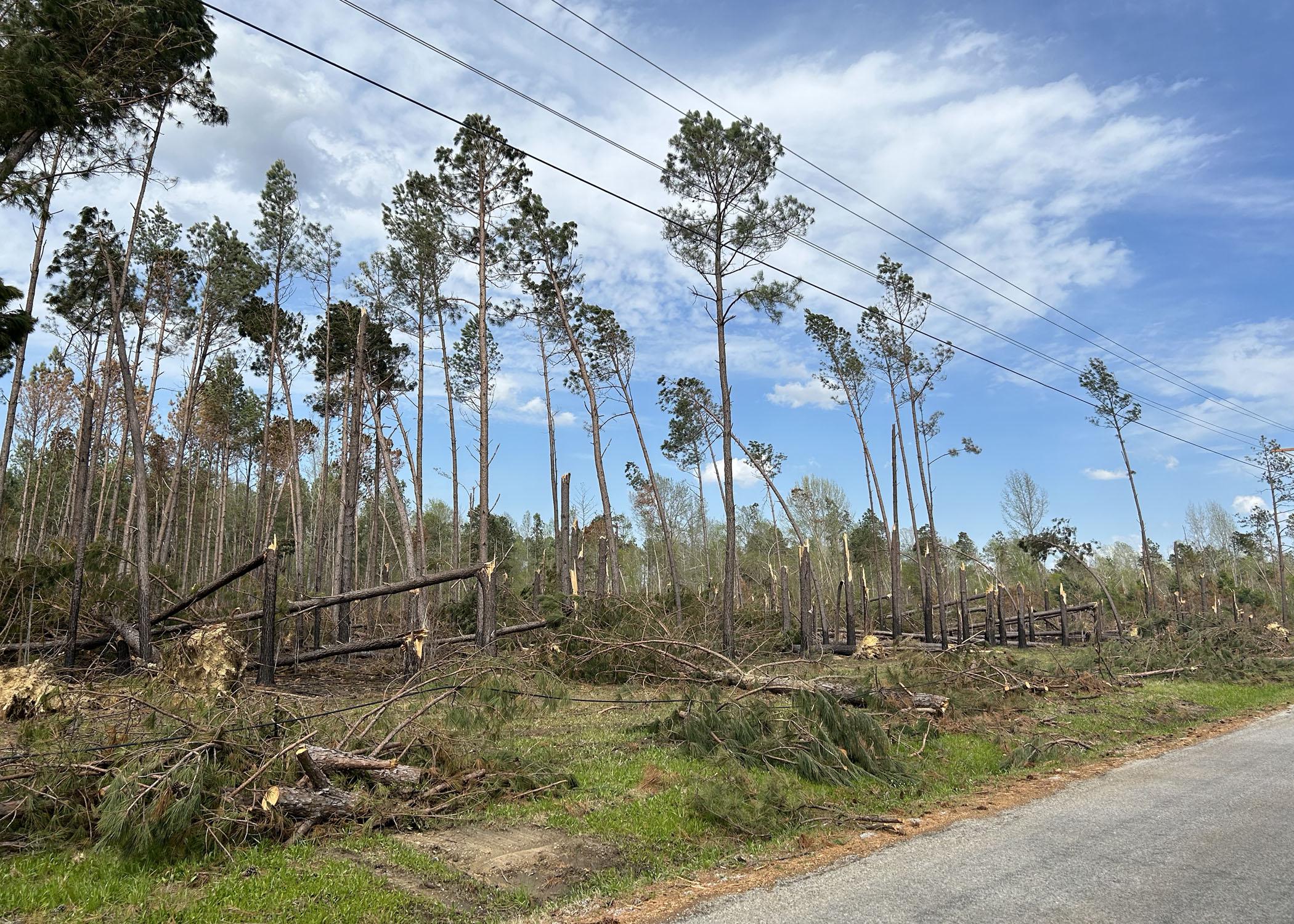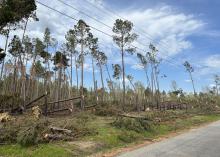Trying to salvage timber? Call a forestry specialist
STARKVILLE, Miss. -- Managers of forestland that was damaged or destroyed during the March 24 tornado outbreak in Mississippi now face questions about the short- and long-term future of their property.
Timber loss was recorded in six of the state’s counties after aerial surveys conducted by the Mississippi Forestry Commission estimated more than $13 million in losses on 23,155 acres, of which 9,281 acres were on nonindustrial private forestland. Storms also battered Enviva’s wood pellet production plant in Amory, suspending operations there.
“Damage from this round of tornadoes definitely seems to be greater than anything I’ve worked in north Mississippi in the last decade,” said Brady Self, an associate Extension professor of forestry with the Mississippi State University Extension Service. “From what I’ve seen, a lot of the timber downed in these storms is a total loss. Adding to the mix, we already had a multiyear surplus of timber supply that people were having trouble harvesting.”
The estimation was based on average quarterly market prices by the ton for pine and hardwood pulpwood, as well as pine and hardwood sawtimber. The quarterly prices at the time of the report were $26.58 per ton for pine sawtimber and $33.73 per ton for hardwood sawtimber. The two counties suffering the most timber value loss were Monroe County with nearly $6.1 million and Carroll County at nearly $5.5 million.
“While acreage is simply acreage, value considers current market value. Monetarily speaking, $10,000 worth of sawtimber a decade ago would have included fewer trees than $10,000 worth in sawtimber now,” Self said. “Calculations using our current lower values for products doesn’t really paint an accurate picture. This is especially true for pine stumpage.”
Many of the questions Self and other MSU Extension timber specialists are asked after tornadoes involve potential federal assistance, tree health and determining what can be salvaged.
“Just because downed timber looks sound does not mean it actually is,” he said. “Depending on multiple factors, downed wood may be perfectly fine, or it may be completely worthless due to factors such as ring shake (internal cracking due to bending), splitting, location of breakage and other factors like drying and insect and fungal damage as time goes on.
“A logger will not come and haul away unprofitable wood, period,” Self added. “Aside from the nature of the damage, remember that logging equipment is designed to cut standing, not fallen trees. Couple that with high insurance costs associated with hiring saw hands, and logging contractors have a tough go of it when salvaging timber.”
Mississippi state forester Russell Bozeman said that, in many of the storm-damaged areas, forest industry analysis data show a high growth-to-drain ratio, meaning that more timber is being grown than harvested.
“Because of the abundance of timber, many private nonindustrial forest landowners face daily challenges of finding loggers and mill access,” he said. “The salvage must be completed in a timely manner, and often finding a logger who is willing to complete this type of harvest and who has mill access can be a challenge. It speaks to the need to have healthy timber markets that can utilize thinning and damaged timber in a timely manner.”
Landowners with profitable timber for a logger to salvage can ask around for contact information for any local logging contractors, or they can call the Mississippi Forestry Association for a list of contractors who might be able to help. MSU Extension also has multiple publications available that detail topics ranging from chainsaw and debris clearing safety to timber casualty loss tax considerations.
“Extension county agents and forestry specialists can go to look at a property and offer technical advice on whether a landowner should consider a tract as manageable or something that they should regenerate,” Self said.
MSU Extension Publication 2619, “Forestry Income Tax Series: Frequently Asked Questions about Timber Casualty Losses,” is available online at . “Thinning to Mitigate Extreme-Weather Risks,” MSU Extension Publication 3823, can be found at .






